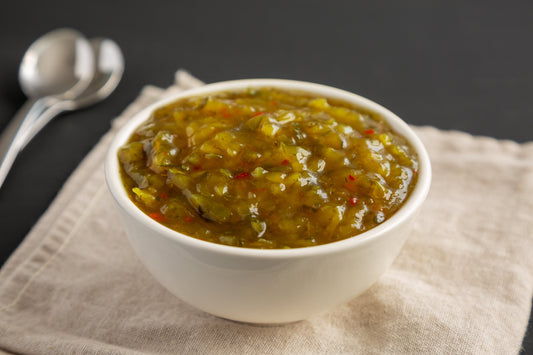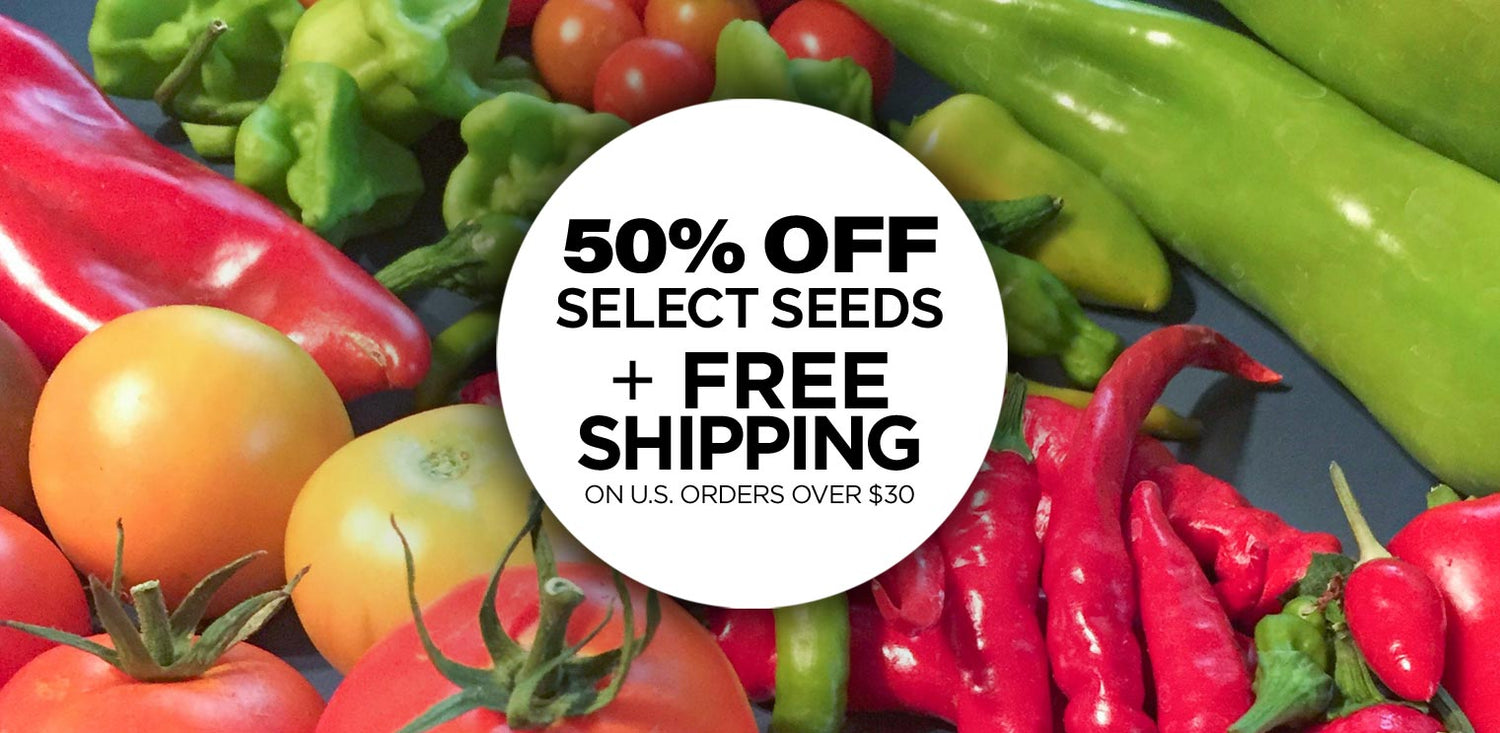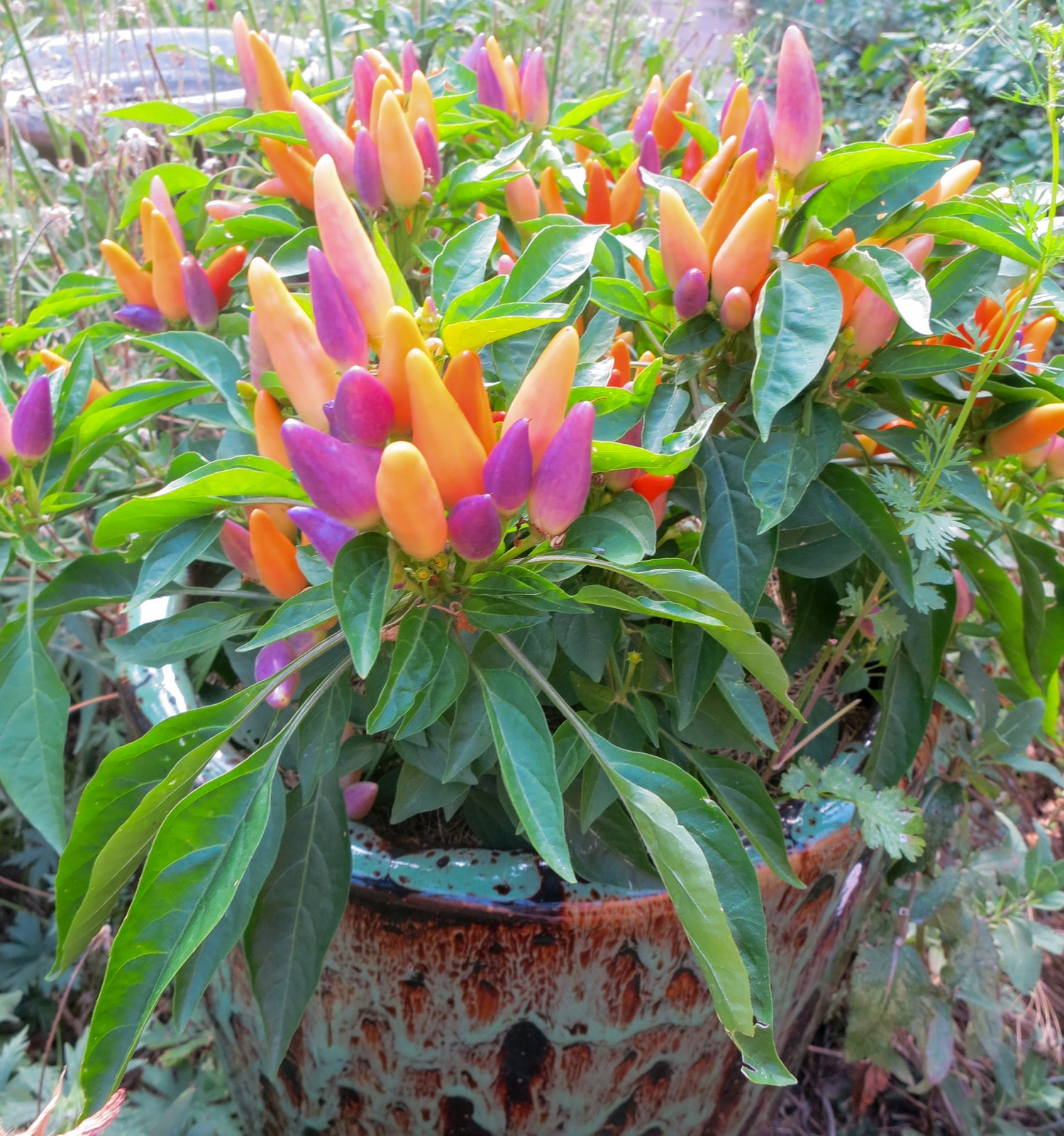
Chillies, chiles, peppers, whatever you want to call them, are easy to grow plants in any vegetable garden. They do like warm weather, so it is best to start them indoors 6-8 weeks before hardening them off and transplanting them outdoors. Chile plants do great in 5 gallon+ pots, and they also grow very well in the ground. Make sure they have well-draining soil, and amend it with homemade compost if possible to keep the plants healthy.
Here our our Top 14 Tips on
How to Grow Chilli Plants:
-
Start chile seeds indoors 6-8 weeks prior to transplanting
-
Keep the chile seeds warm, 80-90˚ F is ideal for germination, you can use a heat mat.
-
Be patient, some chile seeds take a long time to sprout, longer than many other vegetables. Typically pepper seeds germinate in 7-21+ days. Super hot peppers typically take longer to sprout, so don't give up on them.
-
Once they sprout, provide movement and air circulation to prevent seedling damping off and promote good health and stocky seedlings. You can do this by brushing them with your hands daily, or by putting a fan on them.
-
Light is important, and we do recommend supplemental lights as a sunny window is usually not enough light to grow strong seedlings. Keep the lights within 4-8" of the seedlings, with about 12 to 16 hours of light a day. Don't leave the lights on 24 hours, plants like to sleep, too and it won't speed up their growth. Many lights will work, you don't have to spend a fortune on expensive lighting. Here are our tips for some of the Best Light for Seedlings »
-
If you have leggy seedlings, refer to tip #5 - and either brush them daily with your hands or put a small fan on them, this will trigger the seedlings to grow thicker stalks and be more stout, which is best.
-
Keep them watered, but don't over-water your chile seedlings! If the roots are constantly soggy with no air, they will drown, the leaves will turn yellow and they will stop growing or even die. Let the growing medium dry out a bit before watering, and ideally water from the base. We recommend using fast-draining seedling starting mix, and 3-4" deep pots if possible which won't dry out as quickly as smaller pots, so they won't have to be watered constantly. We've also have great success with growing chile peppers from seed using a hydroponic seed starter system such as as an Aerogarden, which uses grow sponges suspended over a water basin that keeps the seedlings perfectly moist.
-
Once they get a few sets of leaves, you can start fertilizing the peppers (especially if they start to lose their emerald green color, that's how you know they need more nutrients). We like to use organic fertilizers, but if using indoors make sure you get one that doesn't stink! Fish and kelp fertilizers are great for using outdoors, but not in your house!
-
Pinch off the first blossoms on your young seedlings, this will help encourage them to put more energy into growing larger and will result in more peppers later.
-
Hardening Off Chile Seedlings: When it's spring, and all chance of frost has passed, you can start acclimating your chile plants by bringing them outdoors for short periods starting out in dappled shade, and gradually working up to a full day of sun and a night or two outdoors. This will harden the seedlings off and prepare them for the outdoor breezes and sunshine. This will also prevent transplant shock.
-
Transplant Chile Seedlings into a growing spot with full sun (6-8 hours). However, it is best to transplant your seedlings in the evening or early morning, not in the middle of a hot sunny day. Overcast days are perfect. Of course, before planting your chile plants outdoors, make sure that all chance of frost has past, and it warms up to 55-60˚ F at night. Peppers don't like cold temperatures, and will freeze easily or get stunted by temperatures below 45˚ F.
-
Grow Chili Pepper Plants in Pots: If you have a short growing season, growing peppers in pots can be a great way to grow peppers more successfully. A few advantages to growing chile plants in pots is that the pots will have much warmer soil earlier in the season. Plus, you can move the pots to a sheltered or indoor location during a late spring or early fall frost or snowstorms, and bring them back out when the cold or storm has passed. Here are the best peppers to grow in containers »
-
Grow Companion Plants with your Chile Peppers: Bush beans, native plants, flowers, and herbs are all helpful to grow around your pepper plants. You can tuck cilantro seeds or basil into large pepper pots, let them go to flower which will attract lots of pollinators and beneficial insects. Growing bush beans around your pepper plants can also help provide a little bottom shade for the peppers which can prevent sunburned peppers. Make sure to give them proper space. Or grow flowers such as Sunflowers or Echinacea around the perimeter of your pepper garden which will attract pollinators, beneficial insects that will help do pest control naturally.
- When to pick chile peppers: When your pepper plant has had pods on it for around the time listed on the packet, it's time to try one and see if it's ripe and ready! Many peppers can be picked green, before they ripen to red or their mature color.... but you want to wait until they're more ripe or they could taste bitter or green.Our advice is to pick one and taste it, if it tastes “green” wait a few days or a week or two and try again until they taste more flavorful.

View all of our Chile Pepper Seeds »


















